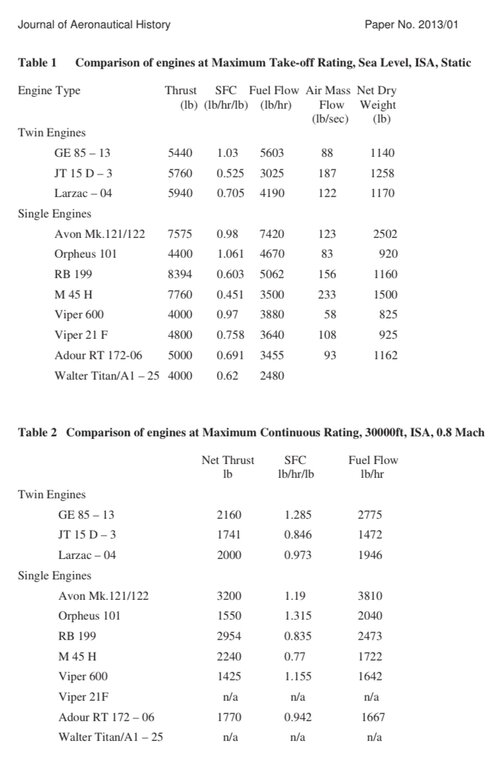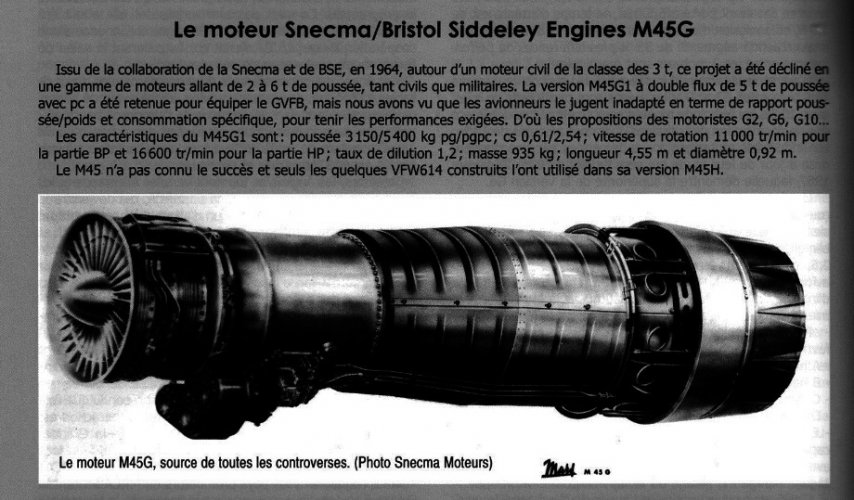The J52 would've been interesting as a parallel project with the F-5E given the evolution of the J52 timeline and it's compact size, weight, and fuel efficiency for its time. Thrust to weight ratio isn't nearly as good as the J85, or the J101 (or later F404), but it's better than pretty much all contemporary western turbojets, especially in that fuel efficiency class. It was compact enough that it probably could've been incorporated into something along the lines of the F-20, but roughly a decade earlier and obviously without as advanced electronics. (developing an appropriate afterburner for it would've been a significant aspect of such a project, though) Based on the afterburning thrust ranges achieved with the various types used on the J57, there should be substantial potential there if a scaled-down version of those were used. (derivatives of the GE J79's afterburners might have been considered too, or Northrop might invest in developing their own custom suited to the airframe)
Based on the dates given in Joe Baughers articles on the A-4 Skyhawk:
and technical data given here:
J52-P-6A
8500 lbf thrust,
.82 lb/lbf/hr,
30.2" diameter,
2056 lb dry weight
Flown on first production A4D-5 (A-4E) July 12, 1961
J52-P-8A
9300 lbf thrust,
.86 lb/lbf/hr
30.2" diameter
2118 lb dry weight
First flown on TA-4E (later redesignated TA-4F) June 30, 1965
J52-P-408
11,200 lbf thrust
.79 lb/lbf/hr
32.1" diameter
118.9" length
2318 lb dry weight
First flown on A-4M April 10, 1970
The 12,000 lbf J52-P409 was later available as an upgrade kit to the -408 model and had better engine acceleration in addition to the increased thrust. (I don't have data on the weight difference, but it may have been quite similar to the -408)
Compare that to the F404-GE-100D of the A-4S Super Skyhawk (the F-20 used the F404-GE-100, so the -100D version may very well be basically the same engine without afterburner).
F404-GE-100D
11,000 lbf thrust
.8 lb/lbf/hr
34.7" diameter
89" length
1820 lb dry weight
Quotes for SFC on most other F404 models are usually over .8 lb/lbf/hr, though. (perhaps due to the
If there was any cost advantage (including maintenance) of the J52 over the F404, or it worked around certain restrictions/prohibitions on exported equipment, the J52 seems like a viable alternative to the F404 in several applications, if a comparable afterburner was fitted.
That may have been a consideration of the YF-17 as a potential export design, or on the F-18L. (though it seems like it would've been a better idea to develop such an export derivative in parallel with the F-18, and would have been most relevant as an export prospect prior to the F-18's adoption by the USMC and USN, given the timeline on export restrictions and the F-16 being blocked)
Foreign buyers already operating A-4 variants might have been more interested in parts and maintenance compatibility of the J52 as well. (presumably there also would've been some cost advantage over the J101 and F404 due to it being an older design with existing volume production, with the afterburner being the only new component to it)
Likewise, that should've been a very real consideration during the design of the F-20 itself, as that came during the prohibition on certain cutting-edge strategic technology in the wake of the problems with Iran and implementation of the Export Administration Act of 1979. (with ban on advanced technologies implemented in 1980) The choice of radar may have still been a limiting factor there, but it would at least avoid issues of engine choice. The F-17 with export-approved engines would've been a better option for buyers interested in something in the F-16's price range during its export prohibition. (though there are other advantages of the F-17 over the F-16 design, particularly if operating costs ended up similarly favorable to the F-18, though engine choice may have been part of that)
Planned use as an alternate powerplant during airframe development would obviously have been more useful than adapting it after the fact. (though in the case of the F-5, a redesign of the airframe at least as extensive as the F-20 would likely be needed, since it was a pre-existing aircraft)


